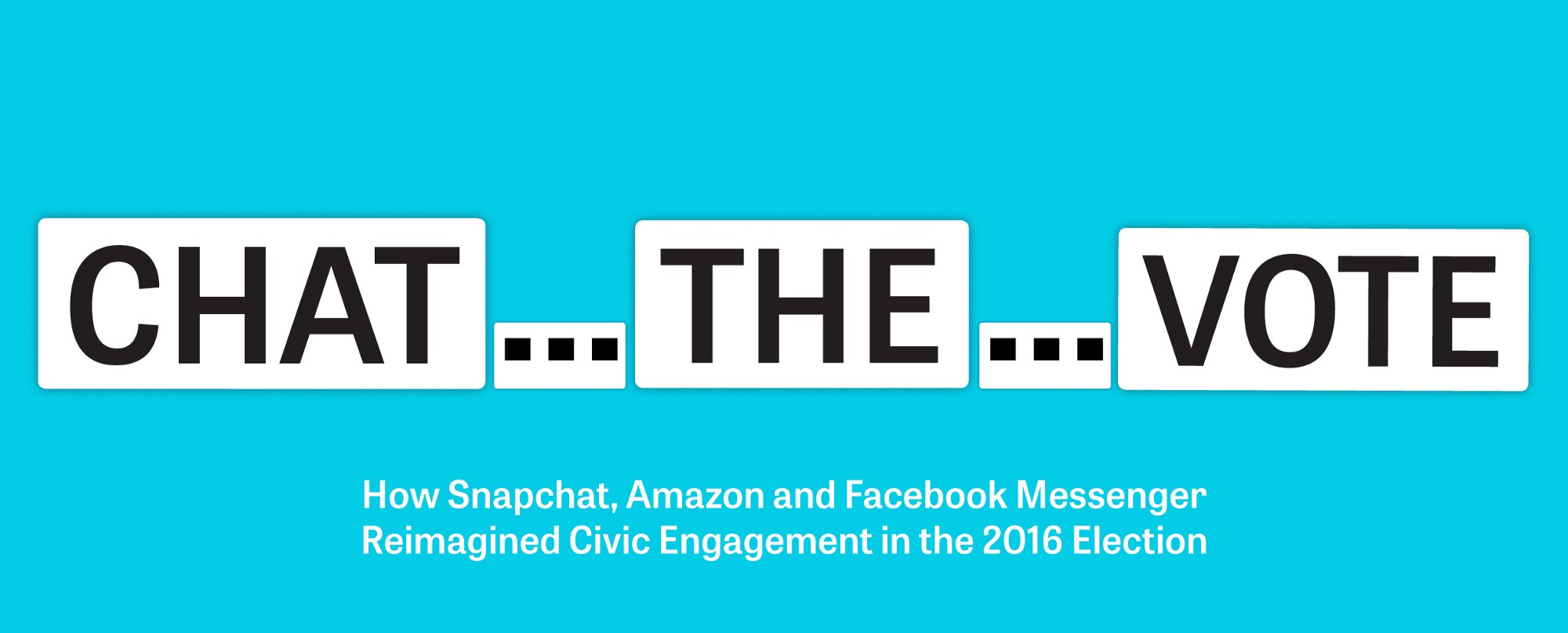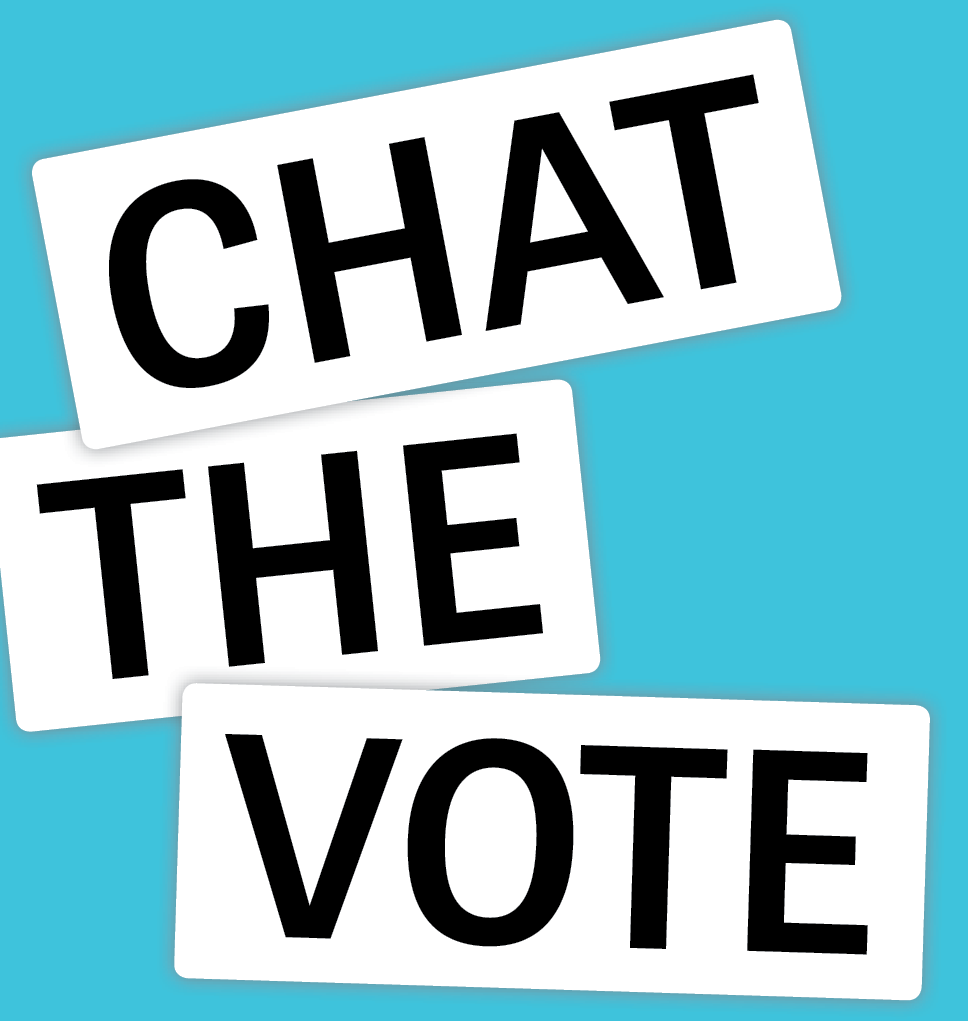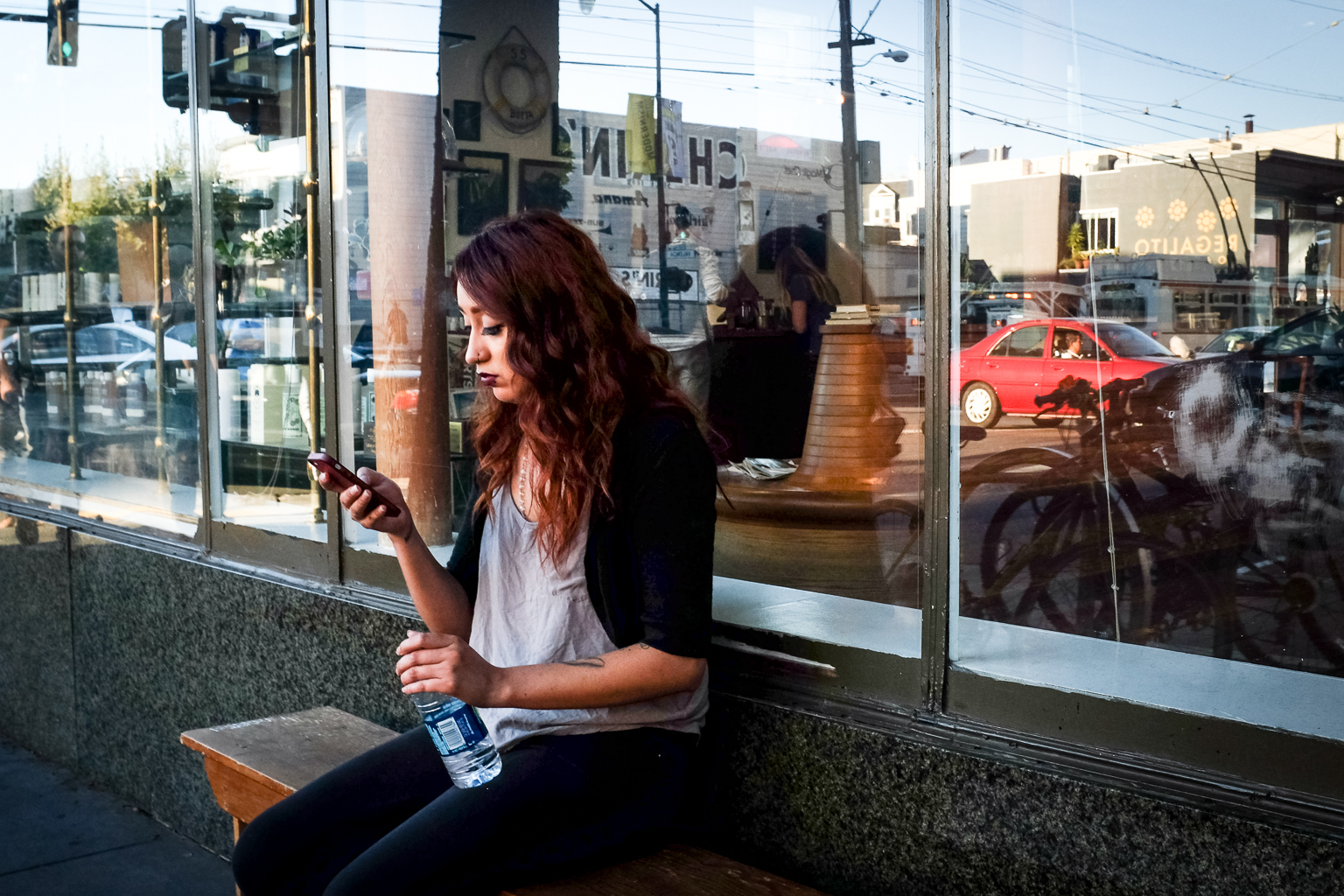
The New Normal? Civic Engagement via Chat
Eytan Oren is CEO of Block Party, a digital consulting agency specializing in chat apps, and author of a new report Knight Foundation is releasing today, “Chat the Vote: How Snapchat, Amazon and Facebook Messenger Reimagined Civic Engagement in the 2016 Election.”
While the topic of “fake news” dominated conversations on the impact of social media on the 2016 U.S. presidential election, there was a quieter digital revolution emerging on the world’s major chat apps that merits a closer look. In “Chat the Vote: How Snapchat, Amazon, and Facebook Messenger Reimagined Civic Engagement in the 2016 Election,” we take you on a comprehensive journey highlighting unique campaigns that forced us to rethink the power of social platforms.
Chat apps overtook traditional social networks in global audience size by 2015, but caught on late in the U.S. because of low texting rates compared to other countries. By 2016, apps such as Snapchat, Facebook Messenger, WhatsApp and Kik took over the U.S. app charts, and many were determined to register or engage voters in political discourse.
Snapchat led that charge, offering a barrage of innovative tools useful to campaigns, news outlets and citizens alike. The app featured interactive voter registration ads, political geofilter overlays, crowd-sourced election-themed “Live Stories,” and original programming and news in its Discover section.
Most major presidential candidates contributed content to “Live Stories” or tried their hand at official campaign Snapchat accounts. There were occasional blunders: Bernie Sanders made his first appearance on the app with a friendly “Hello, Snap-shot!”—while Clinton’s inaugural snap depicted her gazing at the camera to declare that she was “just chilling in Iowa.” Over time all the candidates found their footing and a Snapchat tone and strategy that worked for them.
Among more traditional messaging apps, two technologies emerged as the common language between organizations and users: stickers (large, standalone emojis) and chatbots. Political stickers, while somewhat frivolous, offered a fun and easy way for people to weave political preferences into daily conversations. And chatbots gave CNN, The New York Times and others a chance to leverage rudimentary artificial intelligence to have one-to-one conversations on a broad scale.
Launched a mere six weeks before the November election, organizations such as HelloVote registered voters via chatbot conversations across multiple apps in all 50 states. On the “next frontier” of chat, Amazon’s voice-based Echo platform offered a few experiments of its own to engage voters with on-demand political information.
Many of these recent efforts were the first of their kind. Despite the extensive reach of these new mediums’ (ephemeral) content, it’s still too early to gauge their long-term impact. However, given the changing ways younger generations in particular engage with information some are sure to evolve and expand in future elections.
Follow Block Party on Twitter @weareblockparty.
R
-
Information and Society / Report
-
Community Impact / Press Release
-
Journalism / Article
-
Journalism / Article
-
Technology / Article
-
Journalism / Article
Recent Content
-
Journalismarticle ·
-
Journalismarticle ·
-
Journalismarticle ·







